Today is the first day of the Caring for Critters Round Robin. Think of the Round Robin as a relay race, each day a ‘blogging team member’ will write a post about a specify injury or illness they have experienced. At the end of their post, they will ‘pass the baton’ to the next blogger. This is not your typical blog hop, as there are no linky codes, and there aren’t a whole bunch of posts on one particular day. Instead you will be able to read a post a day about how a fellow animal lover helped their furry loves with a particular ailment.
Please keep in mind, I am not a vet and this is not advice on how to handle an ACL injury, this is just my experience, and what worked or didn’t work for me. Always consult your veterinarian before choosing any course of treatment.
This is the story of Sampson.
Sampson is a 92 pound Golden Labrador Retriever. He shares a home with me, (Jodi) my husband (Hubby) and Delilah, a 8 1/2 year old Chocolate Lab. We live down the street from a lovely wooded park with hiking trails. Walking the trails off leash is one of Sampson’s favorite past times.
On January 8, 2014 he was diagnosed with a partial Anterior Cruciate Ligament (ACL) tear. At the time of his diagnosis he was about 9 1/2 years old.
The Treatment
Initially we treated the injury conservatively. We limited his exercise, allowed him outside only on leash and supported him with Canine Musculoskeletal Support and Ligaplex.
After two months, our vet felt the injured knee was as stable as the uninjured knee and he was cleared for light play with Delilah. They were running in the house in their first play session and Sampson fully tore his ACL.
When All Else Fails
With a sad heart I made an appointment with a surgeon. He confirmed a full ACL tear and we scheduled Sampson for surgery. Two weeks later he had the surgery.
The Outcome
On March 25, 2014 Sampson had ACL repair. The surgeon said, “It went well.” His meniscus was intact so he made a slight incision to release pressure and hopefully keep the meniscus from tearing.)
Sampson’s recovery was not typical of most dogs. I kept Sampson on the original supplements, and he was also on pain medication (Gabapentin, Tramadol and Carprofen.) His exercise was limited to five minute leash walks twice per day and eventually increased to three times per day. His potty breaks were on leash. I kept him quiet in a room, but spent as much time with him as possible. A week after surgery Sampson had a Seroma, which is fluid at the surgery site. I treated this with hot compresses and after a couple of days the fluid was gone.
At the two week mark Sampson’s staples were removed and we started physical therapy twice per week. This involved hydrotherapy (underwater treadmill) and cold laser.
Sampson was slow to progress. Sampson kept turning his knee out when he walked and wasn’t putting the weight on it that he should. The physical therapist was convinced the meniscus was an issue and thought the surgeon might need to go in and check it out. I called my own vet who told me sometimes the larger dogs had trouble with a deep muscle called the Iliopsoas.
When Sampson had his post surgery six week check up the x-rays showed the prosthetic was doing its job. Then the surgeon examined Sampson and diagnosed him with a sore Iliopsoas.
Sampson struggled with the Iliopsoas strain for quite some time. I also think he was a bit depressed. Everything he loved, sleeping on the couch, walking in the woods, running in the yard, were all taken away from him.
Around eight weeks, the physical therapist cleared him for the couch, as long as he was climbing up and not jumping, and he was also cleared for off-leash walking as long as we could keep him from running.
At about the ten week mark, I met with the surgeon and we had a heart to heart. We were both so disappointed in Sampson’s recovery, but neither one of us was ready to proceed with more surgery. The surgeon felt that Sampson was a dog that just needed more time. I told him how much Sampson loved walking in the woods and he said, “Take him.” So I did.
Changing tactics
We knew after the surgery that Sampson had some arthritis in his knee. I suspected at almost 10 he also had some in his hips. We began giving Sampson acupuncture treatments, about one every three or four weeks.
The combination of the acupuncture plus the limited freedoms he was allowed made a world of difference. Sampson began to progress in leaps in bounds.
After three acupuncture treatments we went back to the physical therapist for our last appointment. She was thrilled with the way Sampson was walking and acting.
Finally, five months post surgery Sampson is back to doing everything he did before, with the exception of jumping up onto our bed. He still limps for a minute or so after he first gets up, which is perfectly normal at this phase in his recovery and he does seem to tire a bit more on our walks, but I suppose some tiredness is expected in a dog who is ten years old. We intend to continue acupuncture treatments probably at about one per month and may consider Adequan injections to help with the arthritis.
What I’d do different
If I could do it all over again, I would have had the surgery done before a full tear. It felt like so much time was wasted for an outcome that in a dog Sampson’s size was all but inevitable. I would also allow him a bit more freedom in the first two weeks after the surgery. No I wouldn’t let him climb on the couch, but I would let him have access to common areas as long as we were there to supervise.
Tomorrow’s Round Robin Entry
Tomorrow’s Round Robin will be hosted by Linda at 2 Brown Dawgs. Linda will be sharing Thunder’s life-threatening brush with Canine Bloat.

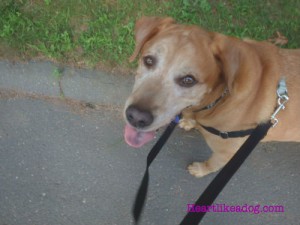
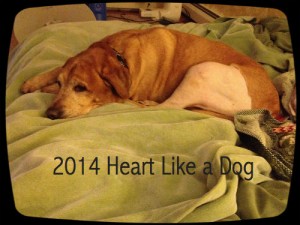
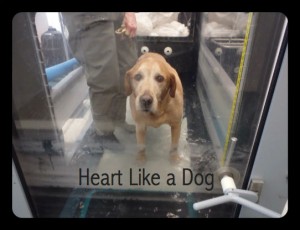
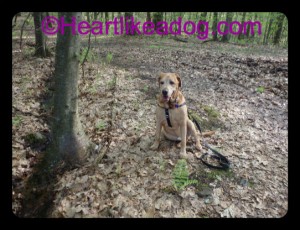
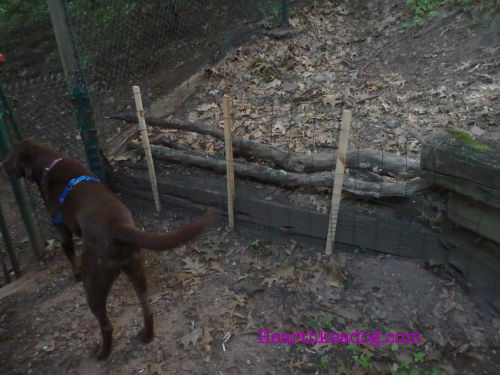
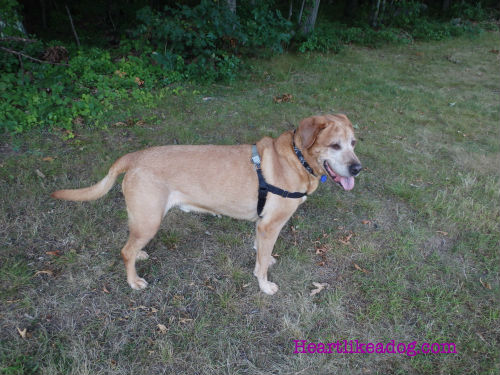

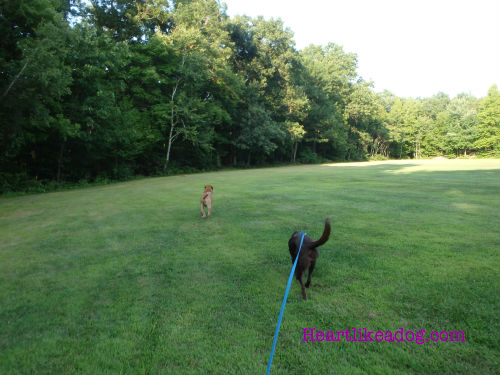


Recent Comments